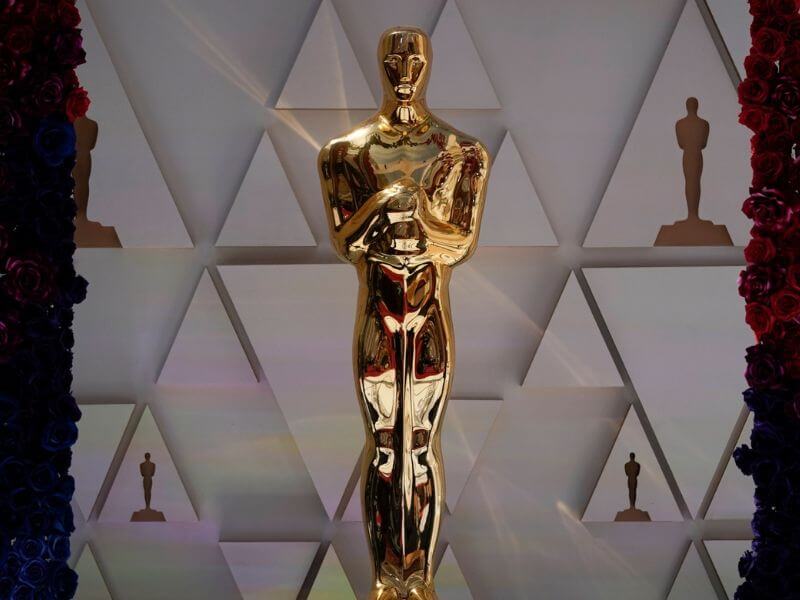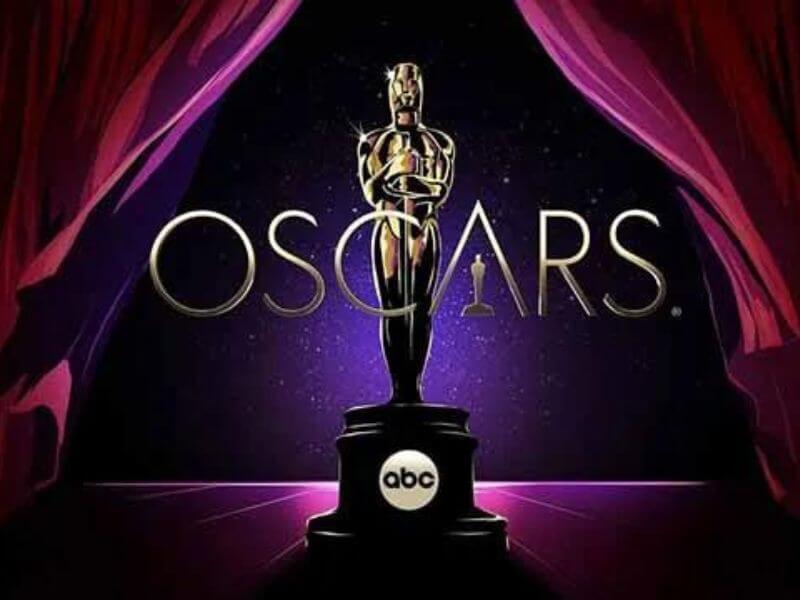Who are the Oscars named after? Every late February or early March, the Academy of Motion Picture Arts and Sciences rolls out a literal red carpet to celebrate the finest crop of producers, directors, performers, and crew members that the industry has to produce for that particular year. From the most well-known categories like Best Picture and Best Actress to more technical awards including Best Lighting and Best Visual Effects, everyone is dressed to the nines and ready to toast the best in their field. And hopefully, by the end of the event, and before you head out to the after-party of your choice, you will be clutching one of those hallowed little golden men of a statue that we have come to know as the “Oscar” award.
But why did it get such an odd and unusual name? The statuette is made of 24-karat gold and stands at 1-foot 8 inches tall, but it’s not like “Oscar” is going to appear on the 10 most popular names in any given year. (No offense to all the readers named “Oscar,” it’s just not that popular a name.) So, why is it attached to the crown jewel of the film industry? Well, there are several theories out there, but no one has ever been able to nail down a factual story as to the origin of the most sought-after award in Hollywood. So let’s dig into the mystery a little further.
Who are the Oscars named after?
The Academy Awards are named after the gold statuettes that are awarded to the winners. The statuettes are officially called Academy Awards of Merit, but they are more commonly known as Oscars.
The name “Oscar” is said to have been coined by Margaret Herrick, the librarian of the Academy of Motion Picture Arts and Sciences. She reportedly said that the statuette reminded her of her Uncle Oscar, who had a large head and a receding hairline.
The name “Oscar” was officially adopted by the Academy in 1939.
Here are some other theories about the origin of the name “Oscar”:
- Sidney Skolsky, a Hollywood columnist, is said to have named the statuettes after Oscar Hammerstein II, a Broadway producer.
- The name “Oscar” is also said to be a reference to the Oscar Wilde, an Irish playwright and poet.
- Some people believe that the name “Oscar” is simply a coincidence.
The true origin of the name “Oscar” is unknown, but it is a name that has become synonymous with the Academy Awards and the film industry as a whole.

History
The first Academy Awards presentation was held on May 16, 1929, at a private dinner function at The Hollywood Roosevelt Hotel with an audience of about 270 people.
The post-awards party was held at the Mayfair Hotel. The cost of guest tickets for that night’s ceremony was $5 ($85 at 2020 prices). Fifteen statuettes were awarded, honoring artists, directors and other participants in the film-making industry of the time, for their works during the 1927–28 period. The ceremony ran for 15 minutes.
For this first ceremony, winners were announced to the media three months earlier. For the second ceremony in 1930, and the rest of the first decade, the results were given to newspapers for publication at 11:00 pm on the night of the awards. In 1940, the Los Angeles Times announced the winners before the ceremony began; as a result, the following year the Academy started using a sealed envelope to reveal the names of the winners.
The term “Oscar” is a registered trademark of the AMPAS; however, in the Italian language, it is used generically to refer to any award or award ceremony, regardless of which field.
Milestones
The first Best Actor awarded was Emil Jannings, for his performances in The Last Command and The Way of All Flesh. He had to return to Europe before the ceremony, so the Academy agreed to give him the prize earlier; this made him the first Academy Award winner in history. At that time, winners were recognized for the entirety of their work done in a certain category during the qualifying period; for example, Jannings received the award for two movies in which he starred during that period, and Janet Gaynor later won a single Oscar for performances in three films. With the fourth ceremony, however, the system changed, and professionals were honored for a specific performance in a single film. For the first six ceremonies, the eligibility period spanned two calendar years.
At the 29th ceremony, held in 1957, the Best Foreign Language Film category, now known as Best International Feature Film, was introduced. Until then, foreign-language films had been honored with the Special Achievement Award.
Perhaps the most widely seen streaker in history was 34-year-old Robert Opel, who streaked across the stage of The Dorothy Chandler Pavilion in Los Angeles flashing a peace sign on national US television at the 46th Academy Awards in 1974. Bemused host David Niven quipped, “Isn’t it fascinating to think that probably the only laugh that man will ever get in his life is by stripping off and showing his shortcomings?” Later, evidence arose suggesting that Opel’s appearance was facilitated as a publicity stunt by the show’s producer Jack Haley Jr..
Robert Metzler, the show’s business manager, believed that the incident had been planned in some way; during the dress rehearsal Niven had asked Metzler’s wife to borrow a pen so he could write down the famous line, which was thus not the ad-lib it appeared to be.
The 74th Academy Awards, held in 2002, presented the first Academy Award for Best Animated Feature.
From 1973 to 2020 and since 2022, all Academy Awards ceremonies have ended with the Academy Award for Best Picture. For 2021, this tradition was broken as the ceremony ended with the Academy Award for Best Actor.
Traditionally, the previous year’s winner for Best Actor and Best Supporting Actor present the awards for Best Actress and Best Supporting Actress, while the previous year’s winner for Best Actress and Best Supporting Actress presents the awards for Best Actor and Best Supporting Actor.
On February 9, 2020, Parasite became the first foreign-language film to win Best Picture at the award ceremony of 92nd Academy Awards.
Tom Hanks announced, at the 2020 Oscar Ceremony, the opening of the Academy Museum of Motion Pictures on December 14, 2020. The museum development started in 2017 under Kerry Brougher, but is now led by Bill Kramer. The industry-curated exhibits are geared toward the history of motion pictures and the art & science of film making, exhibiting trailblazing directors, actors, film-makers, sound editors and more, and the museum houses famous artifacts from acclaimed movies such as Dorothy’s Ruby Red Slippers from The Wizard of Oz.
The 93rd Academy Awards ceremony, honoring the best films of 2020 and early 2021, was held on April 25, 2021, after it was postponed from its original February 28, 2021, schedule due to the impact of the COVID-19 pandemic on cinema. As with the two previous ceremonies, there was no host. The ceremony was broadcast on ABC.
It took place at the Dolby Theatre in Los Angeles, California for the 19th consecutive year, along with satellite location taking place at the Union Station also in Los Angeles. Because of the virus impact on films and TV industries, Academy president David Rubin and CEO Dawn Hudson announced that for the 2021 Oscar Ceremony, streaming movies not shown in theaters would be eligible, though at some point the requirement that movies be shown in theaters would return.

Oscar statuette
Academy Award of Merit
See also: Awards of Merit categories
The best known award is the Academy Award of Merit, more popularly known as the Oscar statuette. Made of gold-plated bronze on a black metal base, it is 13.5 in (34.3 cm) tall, weighs 8.5 lb (3.856 kg), and depicts a knight rendered in Art Deco style holding a sword standing on a reel of film with five spokes. The five spokes represent the original branches of the Academy: Actors, Writers, Directors, Producers, and Technicians
Sculptor George Stanley (who also did the Muse Fountain at the Hollywood Bowl) sculpted Cedric Gibbons’ design. The statuettes presented at the initial ceremonies were gold-plated solid bronze.
Within a few years, the bronze was abandoned in favor of Britannia metal, a pewter-like alloy which is then plated in copper, nickel silver, and finally, 24-karat gold. Due to a metal shortage during World War II, Oscars were made of painted plaster for three years. Following the war, the Academy invited recipients to redeem the plaster figures for gold-plated metal ones.
The only addition to the Oscar since it was created is a minor streamlining of the base. The original Oscar mold was cast in 1928 at the C.W. Shumway & Sons Foundry in Batavia, Illinois, which also contributed to casting the molds for the Vince Lombardi Trophy and Emmy Award statuettes. From 1983 to 2015 approximately 50 Oscars in a tin alloy with gold plating were made each year in Chicago by Illinois manufacturer R.S. Owens & Company.
It would take between three and four weeks to manufacture 50 statuettes. In 2016, the Academy returned to bronze as the core metal of the statuettes, handing manufacturing duties to Walden, New York-based Polich Tallix Fine Art Foundry, now owned and operated by UAP Urban Art Projects. While based on a digital scan of an original 1929 Oscar, the statuettes retain their modern-era dimensions and black pedestal.
Cast in liquid bronze from 3D-printed ceramic molds and polished, they are then electroplated in 24-karat gold by Brooklyn, New York–based Epner Technology. The time required to produce 50 such statuettes is roughly three months. R.S. Owens is expected to continue producing other awards for the Academy and service existing Oscars that need replating.
Naming
The origin of the nickname of the trophy has been disputed as multiple people have taken credit for naming the trophy “Oscar”.
Bette Davis, in her 1962 autobiography, claimed she named it in 1936 after her first husband, Harmon Oscar Nelson, of whom the statue’s rear end reminded her. But the term had been in use at least two years before, and in a 1974 biography written by Whitney Stine with commentary from Davis, Davis wrote “I relinquish once and for all any claim that I was the one — so, Academy of Motion Picture Arts and Sciences, the honor is all yours.”
Margaret Herrick, librarian and president of the Academy, may have said she named it after her supposed uncle Oscar in 1921. The only corroboration was a 1938 clipping from the Los Angeles Examiner, in which Herrick told a story of her and her husband joking with each other using the phrase, “How’s your uncle Oscar”.
Columnist Sidney Skolsky wrote in his 1970 memoir that he came up with the term in 1934 under pressure for a deadline, mocking Vaudeville comedians who asked “Will you have a cigar, Oscar?” The Academy credits Skolsky with “the first confirmed newspaper reference” to Oscar in his column on March 16, 1934, which was written about that year’s 6th Academy Awards. But in the newspaper clipping that Skolsky referred to, he wrote that “these statues are called ‘Oscars'”, meaning that the name was already in use.
Bruce Davis, a former executive director of the Academy, credits Eleanore Lilleberg, a secretary at the Academy when the award was first introduced, for the nickname, as she had been in charge of pre-ceremony handling of the awards. Davis credits Lilleberg because he found in an autobiography of Einar Lilleberg, Eleanore’s brother, that Einar had referenced a Norwegian army veteran named Oscar that the two knew in Chicago, whom Einar described as having always “stood straight and tall.” He asserts credit “should almost certainly belong to” Lilleberg.

Engraving
To prevent information identifying the Oscar winners from leaking ahead of the ceremony, Oscar statuettes presented at the ceremony have blank baseplates. Until 2010, winners returned their statuettes to the Academy and had to wait several weeks to have their names inscribed on their respective Oscars.
Since 2010, winners have had the option of having engraved nameplates applied to their statuettes at an inscription-processing station at the Governor’s Ball, a party held immediately after the Oscar ceremony. The R.S. Owens company has engraved nameplates made before the ceremony, bearing the name of every potential winner. The nameplates for the non-winning nominees are later recycled.
Ownership of Oscar statuettes
Prior to 1950, Oscar statuettes were (and remain) the property of the recipient. Since then the statuettes have been legally encumbered by the requirement that the statuette be first offered for sale back to the Academy for US$1. If a winner refuses to agree to this stipulation, then the Academy keeps the statuette. Academy Awards predating this agreement have been sold in public auctions and private deals for six-figure sums.
In 1989, Michael Todd’s grandson tried to sell Todd’s Best Picture Oscar for his 1956 production of Around the World in 80 Days to a movie prop collector. The Academy earned enforcement of its statuette contract by gaining a permanent injunction against the sale.
In 1992, Harold Russell consigned his 1946 Oscar for Best Supporting Actor for The Best Years of Our Lives to auction to raise money for his wife’s medical expenses. Though his decision caused controversy, the first Oscar ever to be sold passed to a private collector on August 6, 1992 for $60,500 ($126,200 today). Russell defended his action, saying, “I don’t know why anybody would be critical. My wife’s health is much more important than sentimental reasons. The movie will be here, even if Oscar isn’t.”
In December 2011, Orson Welles’ 1941 Oscar for Citizen Kane (Academy Award for Best Original Screenplay) was put up for auction, after his heirs won a 2004 court decision contending that Welles did not sign any agreement to return the statue to the Academy. On December 20, 2011, it sold in an online auction for US$861,542 ($1,120,800 today).
Some buyers have subsequently returned the statuettes to the Academy, which keeps them in its treasury.
Other awards presented by the Academy
See also: Special categories
In addition to the Academy Award of Merit (Oscar award), there are nine honorary (non-competitive) awards presented by the Academy from time to time (except for the Academy Honorary Award, the Technical Achievement Award, and the Student Academy Awards, which are presented annually)
Governors Awards:
- The Academy Honorary Award (annual) (which may or may not be in the form of an Oscar statuette);
- The Irving G. Thalberg Memorial Award (since 1938) (in the form of a bust of Thalberg);
- The Jean Hersholt Humanitarian Award (since 1957) (in the form of an Oscar statuette);
- The Academy Scientific and Technical Awards:
- Academy Award of Merit (non-competitive) (in the form of an Oscar statuette);
- Scientific and Engineering Award (in the form of a bronze tablet);
- Technical Achievement Award (annual) (in the form of a certificate);
- The John A. Bonner Medal of Commendation (since 1978) (in the form of a medal);
- The Gordon E. Sawyer Award (since 1982); and
- The Academy Student Academy Awards (annual).
- The Academy also awards Nicholl Fellowships in Screenwriting.
Nomination
From 2004 to 2020, the Academy Award nomination results were announced to the public in mid-January. Prior to that, the results were announced in early February. In 2021, the nominees were announced in March. In 2022, the nominees were announced in early February for the first time since 2003.
Voters
The Academy of Motion Picture Arts and Sciences (AMPAS), a professional honorary organization, maintains a voting membership of over 7,000 as of 2018.
Academy membership is divided into different branches, with each representing a different discipline in film production. Actors constitute the largest voting bloc, numbering 1,311 members (22 percent) of the Academy’s composition. Votes have been certified by the auditing firm PricewaterhouseCoopers (and its predecessor Price Waterhouse) since the 7th Academy Awards in 1935.
The firm mails the ballots of eligible nominees to members of the Academy in December to reflect the previous eligible year with a due date sometime in January of the next year, then tabulates the votes in a process that takes thousands of hours.
All AMPAS members must be invited to join by the Board of Governors, on behalf of Academy Branch Executive Committees. Membership eligibility may be achieved by a competitive nomination or a member may submit a name based on other significant contributions to the field of motion pictures.
New membership proposals are considered annually. The Academy does not publicly disclose its membership, although as recently as 2007 press releases have announced the names of those who have been invited to join. The 2007 release also stated that it has just under 6,000 voting members. While the membership had been growing, stricter policies have kept its size steady since then.
In 2012, the results of a study conducted by the Los Angeles Times were published describing the demographic breakdown of approximately 88% of AMPAS’ voting membership. Of the 5,100+ active voters confirmed, 94% were Caucasian, 77% were male, and 54% were found to be over the age of 60. 33% of voting members are former nominees (14%) and winners (19%).
In May 2011, the Academy sent a letter advising its 6,000 or so voting members that an online system for Oscar voting would be implemented in 2013.

Rules
According to Rules 2 and 3 of the official Academy Awards Rules, a film must open in the previous calendar year, from midnight at the start of January 1 to midnight at the end of December 31, in Los Angeles County, California, and play for seven consecutive days, to qualify (except for the Best International Feature Film, Best Documentary Feature, and awards in short film categories). Additionally, the film must be shown at least three times on each day of its qualifying run, with at least one of the daily showings starting between 6 pm and 10 pm local time.
For example, the 2009 Best Picture winner, The Hurt Locker, was originally first released in 2008, but did not qualify for the 2008 awards, as it did not play its Oscar-qualifying run in Los Angeles until mid-2009, thus qualifying for the 2009 awards. Foreign films must include English subtitles, and each country can submit only one film for consideration in the International Feature Film category per year.
Rule 2 states that a film must be feature-length, defined as a minimum of 40 minutes, except for short-subject awards, and it must exist either on a 35 mm or 70 mm film print or in 24 frame/s or 48 frame/s progressive scan digital cinema format with a minimum projector resolution of 2048 by 1080 pixels.
Since the 90th Academy Awards, presented in 2018, multi-part and limited series have been ineligible for the Best Documentary Feature award. This followed the win of O.J.: Made in America, an eight-hour presentation that was screened in a limited release before being broadcast in five parts on ABC and ESPN, in that category in 2017. The Academy’s announcement of the new rule made no direct mention of that film.
The Best International Feature Film award does not require a U.S. release. It requires the film to be submitted as its country’s official selection.
The Best Documentary Feature award requires either week-long releases in both Los Angeles County and any of the five boroughs of New York City during the previous calendar year, or a qualifying award at a competitive film festival from the Documentary Feature Qualifying Festival list (regardless of any public exhibition or distribution), or submission in the International Feature Film category as its country’s official selection.
The qualifying theatrical runs must meet the same requirements as those for non-documentary films regarding numbers and times of screenings. Additionally, a film must have been reviewed by a critic from The New York Times, Time Out New York, the Los Angeles Times, or LA Weekly.
Producers must submit an Official Screen Credits online form before the deadline; in case it is not submitted by the defined deadline, the film will be ineligible for Academy Awards in any year. The form includes the production credits for all related categories. Then, each form is checked and put in a Reminder List of Eligible Releases.
Awards in short film categories (Best Documentary Short Subject, Best Animated Short Film, and Best Live Action Short Film) have noticeably different eligibility rules from most other competitive awards. First, the qualifying period for release does not coincide with a calendar year, instead covering one year starting on October 1st, and ending on September 30th of the calendar year before the ceremony. Second, there are multiple methods of qualification.
The main method is a week-long theatrical release in either New York City or Los Angeles County during the eligibility period. Films also can qualify by winning specified awards at one of several competitive film festivals designated by the Academy, also without regard to prior public distribution.
Finally, a film that is selected as a gold, silver, or bronze medal winner in an appropriate category of the immediately previous Student Academy Awards is also eligible (Documentary category for that award, and Animation, Narrative, Alternative, or International for the other awards). The requirements for the qualifying theatrical run are also different from those for other awards.
Only one screening per day is required. For the Documentary award, the screening must start between noon and 10 pm local time; for other awards, no specific start time is required, but the film must appear in regular theater listings with dates and screening times. In late December, ballots, and copies of the Reminder List of Eligible Releases are mailed to around 6,000 active members.
For most categories, members from each of the branches vote to determine the nominees only in their respective categories (i.e. only directors vote for directors, writers for writers, actors for actors, etc.). In the special case of Best Picture, all voting members are eligible to select the nominees. In all major categories, a variant of the single transferable vote is used, with each member casting a ballot with up to five nominees (ten for Best Picture) ranked preferentially.
In certain categories, including International Feature Film, Documentary and Animated Feature, nominees are selected by special screening committees made up of members from all branches.
In most categories, the winner is selected from among the nominees by plurality voting of all members. Since 2009, the Best Picture winner has been chosen by instant runoff voting. Since 2013, re-weighted range voting has been used to select the nominees for the Best Visual Effects.
Film companies will spend as much as several million dollars on marketing to awards voters for a movie in the running for Best Picture, in attempts to improve chances of receiving Oscars and other movie awards conferred in Oscar season. The Academy enforces rules to limit overt campaigning by its members to try to eliminate excesses and prevent the process from becoming undignified. It has an awards czar on staff who advises members on allowed practices and levies penalties on offenders. For example, a producer of the 2009 Best Picture nominee The Hurt Locker was disqualified as a producer in the category when he contacted associates urging them to vote for his film and not another that was seen as the front-runner (The Hurt Locker eventually won).

Academy Screening Room
The Academy Screening Room or Academy Digital Screening Room is a secure streaming platform which allows voting members of the Academy to view all eligible films (except, initially, those in the International category) in one place. It was introduced in 2019, for the 2020 Oscars, though DVD screeners and Academy in-person screenings were still provided.
For films to be included on the platform, the North American distributor must pay $12,500, including a watermarking fee, and a digital copy of the film to be prepared for streaming by the Academy. The platform can be accessed via Apple TV and Roku players. The watermarking process involved several video security firms, creating a forensic watermark and restricting the ability to take screenshots or screen recordings.
In 2021, for the 2022 Oscars, the Academy banned all physical screeners and in-person screenings, restricting official membership viewing to the Academy Screening Room. Films eligible in the Documentary and International categories were made available in different sections of the platform. Distributors can also pay an extra fee to add video featurettes to promote their films on the platform.
The in-person screenings were said to be cancelled because of the COVID-19 pandemic. Eligible films do not have to be added to the platform, but the Academy advertises them to voting members when they are.
Above is information about Who are the Oscars named after? The history of this name? that we have compiled. Hopefully, through the above content, you have a more detailed understanding of Oscars named. Thank you for reading our post.









